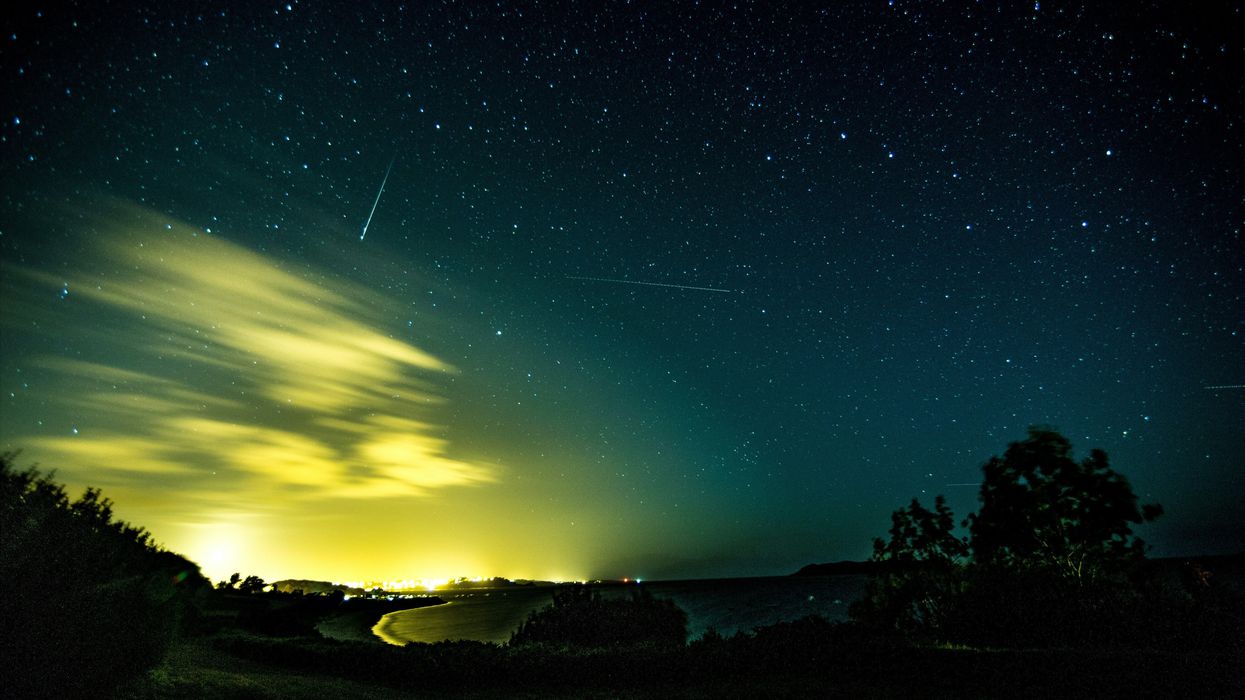Three meteor showers are lighting up the sky in Canada with 'crisscrossing' meteors this week
You could see a few fireballs too! ☄️

Meteors and stars in the night sky.
Three meteor showers are happening at the same time this week.
You can see "crisscrossing" meteors in the night sky across Canada.
The Weather Network revealed that the Perseids, delta Aquariids and alpha Capricornids are lighting up the sky over Canada during the last week of July.
Even though this trio has been producing shooting stars for weeks now, the end of July is the best time to view the meteor showers.
You should look to the night sky from Tuesday, July 29, to Thursday, July 31, because the moon will be to the west and dip below the horizon by midnight.
That means you have many hours of darkness to see meteors streak across the sky.
During that time, there should be around 20 meteors per hour from the Perseids coming from the northeast, crisscrossing with about 20 delta Aquariids per hour from the southeast.
Then, on the night of July 31, the alpha Capricornids are expected to overlap with those two meteor showers and add up to five more meteors per hour.
So, you could see around 45 meteors per hour during the last few days of July!
The alpha Capricornids radiate from the constellation Capricornus in the southern sky.
Meteors from the alpha Capricornids are "fairly bright," and can even be fireballs.
Fireballs are "exceptionally bright meteors" that can be easily seen for hundreds of kilometres, according to The Weather Network.
With the Perseids, meteors appear from the constellation Perseus in the northern sky.
Even though the Perseid meteor shower doesn't peak until August, it still produces 15 to 20 meteors per hour at the end of July.
The delta Aquariids radiate from the constellation Aquarius in the southern sky.
It peaks during the last few nights of July, and there are typically around 20 meteors per hour.
If you want to try and see these crisscrossing meteors, the Canadian Space Agency has tips for viewing meteor showers like the Perseids.
You should find a place that's dark because city lights make it hard to see fainter meteors.
Then, you should sit or lie down. It's more comfortable to look at the night sky that way, and it also helps you see more meteors.
It's recommended that you be patient because it could take a while before you see a shooting star as you let your eyes adjust to the darkness and figure out where in the sky to look.
You don't need any special equipment, like a telescope or binoculars, to see meteor showers.
This article's cover image was used for illustrative purposes only.
